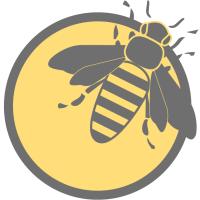Early-season mass-flowering crop cover dilutes wild bee abundance and species richness in temperate regions: A quantitative synthesis
Journal of Applied Ecology, 61 (3):
452-464 (2024)DOI: https://doi.org/10.1111/1365-2664.14566
Abstract
Abstract Pollinators benefit from increasing floral resources in agricultural landscapes, which could be an underexplored co-benefit of mass-flowering crop cultivation. However, the impacts of mass-flowering crops on pollinator communities are complex and appear to be context-dependent, mediated by factors such as crop flowering time and the availability of other flower resources in the landscape. A synthesis of research is needed to develop management recommendations for effective pollinator conservation in agroecosystems. By combining 22 datasets from 13 publications conducted in nine temperate countries (20 European, 2 North American), we investigated if mass-flowering crop flowering time (early or late season), bloom state (during or after crop flowering) and extent of non-crop habitat cover in the landscape moderated the effect of mass-flowering crop cover on wild pollinator abundance and species richness in mass-flowering crop and non-crop habitats. During bloom, wild bee abundance and richness are negatively related to mass-flowering crop cover. Dilution effects were predominant in crop habitats and early in the season, except for bumblebees, which declined with mass-flowering crop cover irrespective of habitat or season. Late in the season and in non-crop habitats, several of these negative relationships were either absent or reversed. Late-season mass-flowering crop cover is positively related to honeybee abundance in crop habitats and to other bee abundance in non-crop habitats. These results indicate that crop-adapted species, like honeybees, move to forage and concentrate on late-season mass-flowering crops at a time when flower availability in the landscape is limited, potentially alleviating competition for flower resources in non-crop habitats. We found no evidence of pollinators moving from mass-flowering crop to non-crop habitats after crop bloom. Synthesis and applications: Our results confirm that increasing early-season mass-flowering crop cover dilutes wild pollinators in crop habitats during bloom. We find that dilution effects were absent late in the season. While mass-flowering crop cultivation alone is unlikely to be sufficient for maintaining pollinators, as part of carefully designed diverse crop rotations or mixtures combined with the preservation of permanent non-crop habitats, it might provide valuable supplementary food resources for pollinators in temperate agroecosystems, particularly later in the season when alternative flower resources are scarce.
